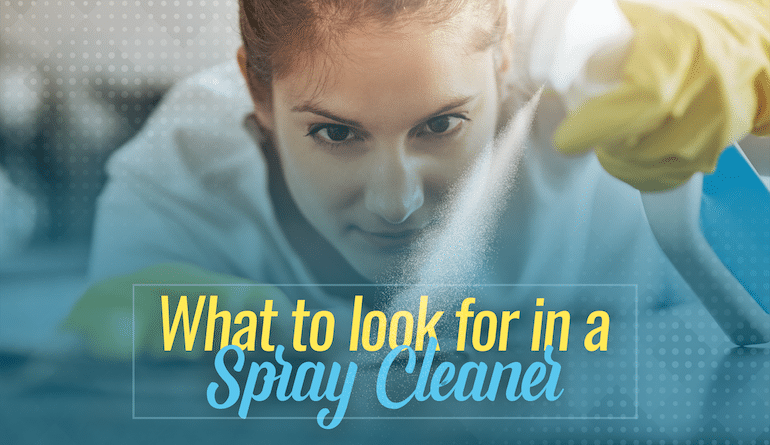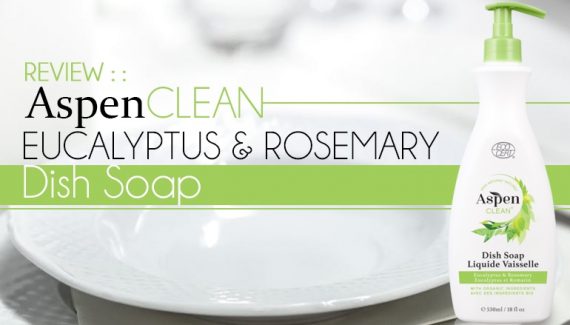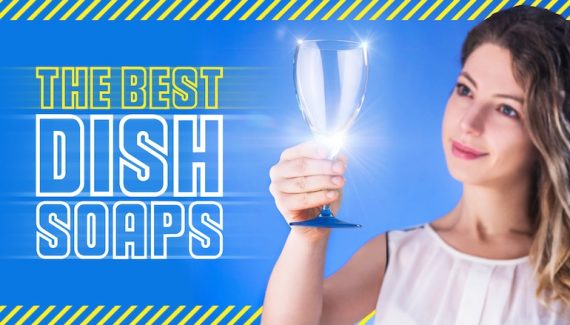Safe Household Cleaning is reader-supported. All reviews are independent and any products reviewed are purchased by the site owner. To help fund this model, some of the links on the site are affiliate links. If you decide to make a purchase from one of these links, this site will receive some commission. At no cost to you. It helps keeps this place running. Learn more
Staring at a shelf full of spray cleaners can leave even the best shoppers baffled.
What should I look for?
How do I know it works? Is this cheaper kitchen spray better than this expensive all-purpose spray?
Can I use a kitchen cleaner in the bathroom?
Can I use a bathroom cleaner in the kitchen?
We’ve already outlined what we consider the best kitchen and bathroom cleaners as well as what are the best all-purpose cleaners on the market, but what’s the difference between a kitchen, bathroom or all-purpose cleaner?
By the end of this article, you’re going to be a cleaning genius with answers.
What Is A Spray Cleaner?
First stop, what is a spray cleaner? What makes a bathroom cleaner different from a kitchen cleaner? Can you tell if one bathroom cleaner is 10 times more powerful than another? And can you do this without buying and using both? Can you tell from a quick look at the ingredients list?
The differences between a bathroom, kitchen and all-purpose spray cleaner are explained best by thinking about the difference between hand wash, shower gel and shampoo.
You might be shocked to find out – all 3 of these formulas are exceptionally similar.
In fact, you can use either 3 for either function.
A shower gel as a hand wash or a shampoo as a shower gel. However, if you wash your face with a shampoo, you’d be missing out on extremely subtle differences in what is designed for the face and what is designed for the hair. And these subtle differences in design have a profound impact on the finished product. Subtle differences that can make your hair feel spectacular or your skin feel bone dry.
These differences are all in the detail.
By the end of this article, you’ll understand these differences, will understand how spray cleaners work and know what you should be looking for.
What’s in this article:
Table of Contents
How Do Spray Cleaners Clean?
There are 10 key types of ingredient in any spray cleaner. Take a quick peek below, we’re explaining more after this list so don’t worry if some of these names sound scary or unapproachable.
- Water
- Surfactants
- Alkaline agents/cleaners
- Acid agents/cleaners
- Alcohol
- Essential oils or fragrance
- Preservatives
- Antiseptic actives
- Formula enhancers
- Listed allergens
The first ingredient you’re 99% likely to find in any spray cleaner is water.
Sounds simple right? It also sounds like a waste – I’m paying for water! I can get this stuff from my very own tap!
Water is actually an exceptionally important ingredient in all-purpose spray cleaners. Firstly water allows an all-purpose cleaner to be sprayed. Tick box #1. Secondly, water dissolves up cleaning actives which may be solid or sticky and unusable as a concentrate. Tick box #2.
Note; some of the cleaning actives we’re about to talk through are highly corrosive if purchased as a concentrate i.e. lactic acid. If you’re thinking – why can’t I just buy a concentrate or can I just make my own DIY all-purpose spray cleaner? Beware – many of these ingredients are hazardous. Think of it like the difference between an alco-pop with 4% alcohol and a bottle of absinthe with 70% alcohol.
Bottom line – water will be first on the list of your all-purpose cleaner. It keeping you safe and it means you can spray into hard to reach crevices.
The 2nd type of ingredient you’ll find in most spray cleaners goes by the name ‘surfactant’.
Surfactants are exciting molecules.
Psst; Molecules just means a collection of atoms like carbon and oxygen.
Surfactants are exciting because they do something most molecules can’t. They dissolve in both water and oil aka grease.
This is a powerful skill.
This is how stain-removers work.
One part of the surfactant molecule (the head) dissolves in water and water-based stains while the other part of the surfactant molecule (the tail) dissolves in oils and greasy stains.
Because the same molecule now has parts of itself dissolved in grease and water – it can lift up these stains and wash them away pronto.
Know how power-up; surfactants are the very same actives which get used in shower gels, shampoos and hand wash products.
Common examples include (psst – most of this list are plant-derived and environmentally friendly);
- Cocamidopropyl Betaine (amphoteric – more about this soon)
- Decyl Glucoside – most common in best natural spray cleaners (non-ionic)
- Caprylyl Capryl Glucoside (non-ionic)
- Lauryl Glucoside (non-ionic)
- Coco Glucoside (non-ionic)
- Caprylyl Myristyl Glucoside (non-ionic)
- C10-16 Alkyl Glucoside (non-ionic)
- Sodium Lauryl Sulfate (anionic)
- Laureth-7
- Lauryl Betaine (amphoteric)
- Disodium Cocoyl Glutamate
- PEG-5 Cocoate
Actives highlighted in bold are common in the best natural and safe household spray cleaners.
Solubilisers – these are also surfactants but only dissolve small amounts of oil;
- Polysorbate 20
Actives with natural surfactant properties;
- Quillaja Saponaria (Soap Bark) Bark Extract
Did you notice any patterns here?
Clues you’re looking at a surfactant;
- You see the name end in glucoside – these are some of the most common and most gentle surfactants
- You see the name sulfate – common but tend to be stronger/harsher
Extra tip; non-ionic surfactants are the most gentle, anionic cleaners are harsher.
Pro-tip; a kind of surfactant called amphoteric is THE most gentle and can make other harsh surfactants milder. An amphoteric surfactant has both a positive and negative change (an anionic has just a negative charge).
How to use this knowledge; most traditional spray cleaners which don’t disclose the ingredients will tell you <5% anionic detergents or <5% non-ionic detergents. Whereas natural, environmentally friendly cleaning sprays tend to disclose their ingredients in full. Non-ionic surfactants are best. Amphoterics are even better. Gentle and effective.
The 3rd type of ingredient you may find in a cleaning spray is acid cleaners.
These are easy to pick out as you’ll see the word acid after the name. For example;
- Citric acid
- Lactic Acid
- Acetic Acid
Surfactants usually cannot hack stubborn stains alone. For limescale or tarnished taps or even for rust – you need an acid cleaner.
Acids are fantastic for breaking down mineral-based stains.
The 4th type of ingredient you may find in a cleaning spray is alkaline cleaners.
These actives tend to be called hydroxides or carbonates, for example;
- Potassium Hydroxide
- Sodium Carbonate
- Bleach also counts i.e. sodium hypochlorite
- Ammonia
Alkaline cleaners are ‘the bomb’ for oily or waxy stains.
The 5th type of ingredient you may find in a cleaning spray list is alcohol.
Which is super simply going to be found as;
- Alcohol denat.
- Or sometimes as isopropyl alcohol
Alcohol is a solvent and a de-greaser. Just like surfactants alcohol is unique. Unique because alcohol can also dissolve in both water-based and oil.
Pro tip – stains are always either water-soluble or oil soluble. Think of stain removal power like a ruler with water-soluble on one side and oil-soluble on the other side.
Alcohol is particularly effective for stubborn oily stains. Alcohol works by getting mixed up into the oil i.e. dissolving parts of itself into the oil. As this happens, oil molecules are separated from one another and can effectively ‘melt’ away.
The 6th type of ingredient you may find in a cleaning spray list is essential oils and/or fragrance.
Artificial fragrance is extremely common in supermarket brought all-purpose cleaners. Essential oils are extremely common in natural, environmentally friendly all-purpose spray cleaners.
You’re either going to see the word;
- Fragrance, perfume or parfum
- Or an essential oil like tea tree oil or lavender oil
Note; some essential oils have mild antiseptic benefits. For example tea tree oil. In some natural all-purpose spray cleaners, you can even find the concentrated natural active which gives tea tree oil its antiseptic benefits. More about this soon.
Bottom line; fragrance is just to make your cleaner smell good. Essential oils can add antiseptic benefits.
The 7th ingredient type you may find in a cleaning spray is a preservative.
Sometimes they don’t include one because the formula is self-preserving i.e. it contains essential oil with preservative powers or the formula is acid-based – bacteria cannot be grown in especially acidic environments.
Common examples include;
- Potassium Sorbate
These don’t add value to the power of your cleaning sprays however they do make sure they’re staying fresher for longer.
The 8th type of ingredient you may find in a cleaning spray is an antiseptic.
Antibacterial cleaners are cleaning germs away, killing bacteria, giving you surfaces that are good enough to eat off of.
Actives like;
- Terpineol – found in ATTITUDE Bathroom Cleaner
- Thymol – the active ingredient that gives thyme essential oil its antiseptic benefits – found in CleanWell Botanical Disinfectant All-Purpose Cleaner
- Chloroxylenol – used in Dettol
- Triclosan
Note; terpineol is found in tea tree oil and has antiseptic benefits, it’s even been tested for skin and eye infections.
While some cleansing actives like acids and alcohols are naturally antiseptic, added antiseptics can be fantastic for surfactant only formulas. Great for kitchen surfaces you’re cooking from. Great for bathroom surfaces which could become breeding grounds for infection.
The 9th type of ingredient you may find in a cleaning spray are formula enhancers.
Here to make your all-purpose cleaning spray a breeze or a beauty to use. Some like xanthan gum thickens up a formula i.e. stop it from dripping out of the bottle before you use it. Others like colorants (i.e. polymeric red) make the formula feel pretty. Some like aloe vera or glycerin can attract water to a surface making it feel smooth and the formula glide over your stain treatment area effortlessly.
The 10th type of ingredient you have potential to find in a cleaning spray list are allergens (!)
Most allergens found in all-purpose spray cleaners are present because the formula uses fragrances, essential oils or preservatives. Some of the most common to find in all-purpose cleaners are;
- Limonene
- Linalool
- Benzisothiazolinone
- Methylisothiazolinone
Avoid if your family are allergy-prone.
What is the difference between a bathroom, kitchen and all-purpose cleaner spray?
Can you use a bathroom cleaner in the kitchen? Will an all-purpose cleaner cut it for kitchen and bathroom cleaning?
Let’s use an example to find out.
Method bathroom cleaner vs. Method daily kitchen spray vs. Method all-purpose spray.
Exhibit 1 – Method kitchen spray. The formula uses mild surfactants i.e. decyl glucoside – remember it from our list? There’s not much else in the formula apart from parfum and some allergens.
Psst; citric acid comes last on this ingredients list. As it’s low down there’s a tiny amount of this in the formula. This means it’s not being used as an acid cleaner in this scenario, instead it’s being used to balance the formulas pH level. This is important as it makes the other actives most effective.
Exhibit 2 – Method Daily kitchen spray. This formula uses a big punch of alcohol plus lactic acid and then a few surfactants. Multiple cleaning actives give even better power. The lactic acid and alcohol combination will also give strong antibacterial benefits.
What makes a kitchen cleaner different from a bathroom cleaner? In this example, the bathroom cleaner has a much stronger, more aggressive formula with added antibacterial power.
Good for surfaces like tiles and mirrors which are not delicate. Also good for limescale staining – remember how acid cleaners are fantastic against limescale?
Exhibit 3 – Method all-purpose spray. This formula uses a combination of surfactants – a lot more than Method kitchen spray is using. As different kinds of surfactants are best at removing slightly different kinds of grime and dirt, multiple surfactants generally results in better cleaning performance.
What makes an all-purpose cleaner different?
Vs. a kitchen spray – it contains a wider variety of cleaning actives for better performance across a multitude of stains.
What makes an all-purpose cleaner different?
Vs. a bathroom spray – it does not contain as many partnering actives for limescale removal or for antiseptic benefits.
We’ve reviewed a ton of kitchen and bathroom cleaners over the years – and compiled a list of the best kitchen and bathroom cleaners on the market today
Spray Cleaner FAQs;
Does disinfectant spray work?
Whether a disinfectant spray does or does not work depends on the active ingredients it contains. For a spray cleaner to disinfect a surface safely it needs an antiseptic active in concentrations that are proven to work. This could be a natural antiseptic like tea tree oil (or the active tea tree oil contains – called terpineol) or a man-made antiseptic like Chloroxylenol – which is found in Dettol.
What is the best all-purpose cleaner?
Cleaning sprays can contain a variety of cleaning actives. The best all-purpose cleaners contain not just one but 2 or more cleaning actives. This is because many stains require a specific type of cleaning active ingredient to remove them.
Any kind of stain you encounter at home is either completely water-based, completely oil-based or somewhere in-between. Only like substances can dissolve other like substances. Meaning only water can dissolve water-based stains and only oil can remove oil-based stains. A variety of cleaning actives ensures a stain on any notch of this ruler can be dissolved and washed away effectively.
Therefore the best all-purpose cleaners may contain a surfactant like Cocamidopropyl Betaine, an alkaline-based cleaner like potassium hydroxide and even a solvent like alcohol. Take for example Method’s All-Purpose Cleaner which contains a surfactant in addition to multiple alkali cleaners.
We have compiled a list of the best but gentlest all-purpose cleaners on the market today
What is the difference between an All-Purpose Cleaner and Multi-Purpose Cleaner?
All-purpose and multi-purpose cleaning products do the exact same job. Working like a 2 in 1 shampoo and conditioner they often contain a combination of cleaning actives to help remove a bit of all kinds of stains. They are however not advised for specialist cleaning tasks like glass cleaning.
What is the best natural all-purpose cleaner?
In-depth ingredient analysis and rigorous science-led testing have led us to rate Attitude citrus zest all-purpose cleaner as the best natural all-purpose cleaner money can buy. Not only is the formula ultra-gentle, eco-friendly and hypoallergenic, it’s also highly effective. Made from a collection of 7 worry-free ingredients, it’s vegan friendly and PETA approved.
What is an all-purpose cleaner used for?
All-purpose cleaners are designed as cleaning solutions you can use on any household surface and for any household stain. While kitchen and bathroom cleaners focus on a selection of actives which are especially effective for just 1 type of stain – for example, limescale, all-purpose cleaners take a multi-active approach.
In our experience all-purpose cleaners are a wise choice for quick, general cleans however specialist tasks e.g. glass cleaning usually require a specialist cleaner. This is because they contain added extras which aid in ultimate finishes i.e. a streak-free shine.



No Responses Yet